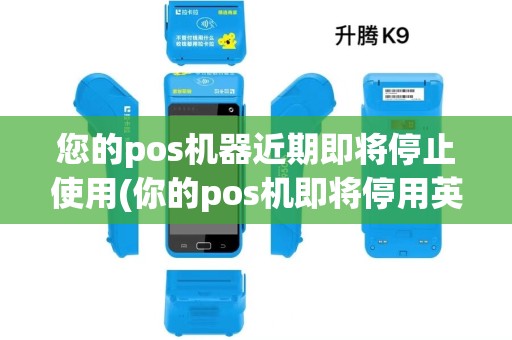In an era where technology is rapidly evolving, businesses are increasingly reliant on electronic payment systems to streamline transactions and enhance customer experience. Among these systems, Point of Sale (POS) terminals have become an indispensable tool for retailers and service providers alike. However, there comes a time when every POS terminal reaches the end of its service life, prompting the message, "Your POS terminal will be suspended." This article aims to shed light on the reasons behind this message and the steps businesses should take to ensure a seamless transition.
**Reasons for POS Terminal Suspension**
1. **End of Life (EOL):** Just like any other electronic device, POS terminals have a limited lifespan. Manufacturers establish an EOL policy for their products, which dictates the date after which they will no longer support the terminal, including software updates, maintenance, and repairs.

2. **Security Risks:** With the rise of cyber threats, older POS terminals may not have the latest security features to protect sensitive customer data. To mitigate these risks, banks and payment processors may require businesses to upgrade their terminals.
3. **Regulatory Compliance:** Payment industry regulations, such as PCI DSS (Payment Card Industry Data Security Standard), are continually updated. POS terminals that do not meet these compliance standards may be suspended, leading to potential fines and legal repercussions.
4. **Hardware Issues:** Over time, POS terminals can experience hardware failures that affect their performance. If repairs are no longer feasible or cost-effective, the terminal may be suspended.
5. **Software Obsolescence:** As new versions of POS software are released, older terminals may not be compatible with these updates, leading to a decrease in functionality and overall efficiency.
**Steps to Address the Suspension Notice**
1. **Assess Your Needs:** Before making any decisions, evaluate your business's needs. Consider the volume of transactions, the types of payments accepted, and any specific features required.
2. **Research and Compare Options:** Look into the latest POS terminal options available in the market. Consider factors such as cost, ease of use, security features, and customer support.
3. **Consult with Your Payment Processor:** Your payment processor can provide valuable insights into the best POS terminal options and guide you through the transition process.
4. **Plan the Migration:** Develop a detailed plan for the migration process, including training staff, updating software, and ensuring uninterrupted service during the transition.
5. **Choose a Reliable Provider:** Select a reputable POS terminal provider that offers reliable support, comprehensive training, and ongoing maintenance services.
6. **Implement the New Terminal:** Once the new terminal is delivered, install it and configure it according to your business's requirements. Ensure that all necessary software and updates are installed.
7. **Train Your Staff:** Provide comprehensive training to your staff to ensure they are comfortable using the new terminal and can efficiently handle transactions.
8. **Monitor Performance:** After the migration, closely monitor the performance of the new POS terminal. Address any issues promptly to maintain a smooth operation.
**Conclusion**
The message "Your POS terminal will be suspended" is a critical reminder for businesses to stay current with technology and regulatory requirements. By understanding the reasons behind this message and taking proactive steps to address it, businesses can ensure a seamless transition to a new POS terminal, thus enhancing their payment processing capabilities and customer experience. Remember, keeping up with technological advancements is not just about staying competitive—it's about safeguarding your business and your customers' data.


发表评论